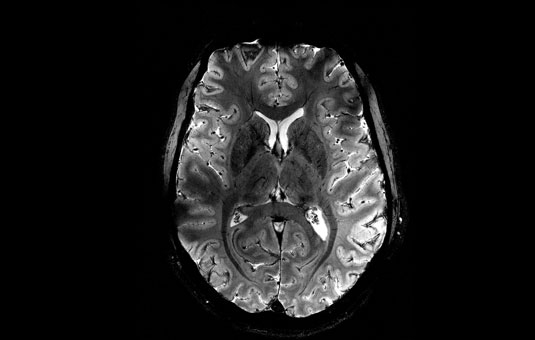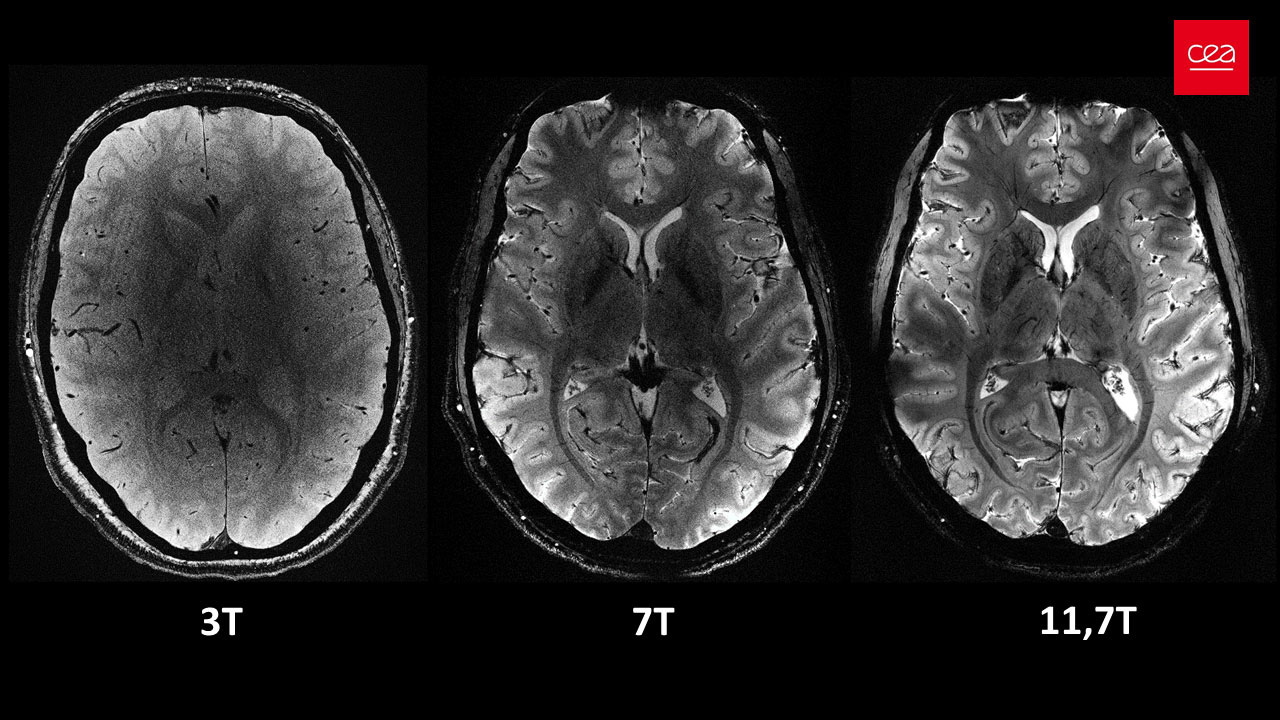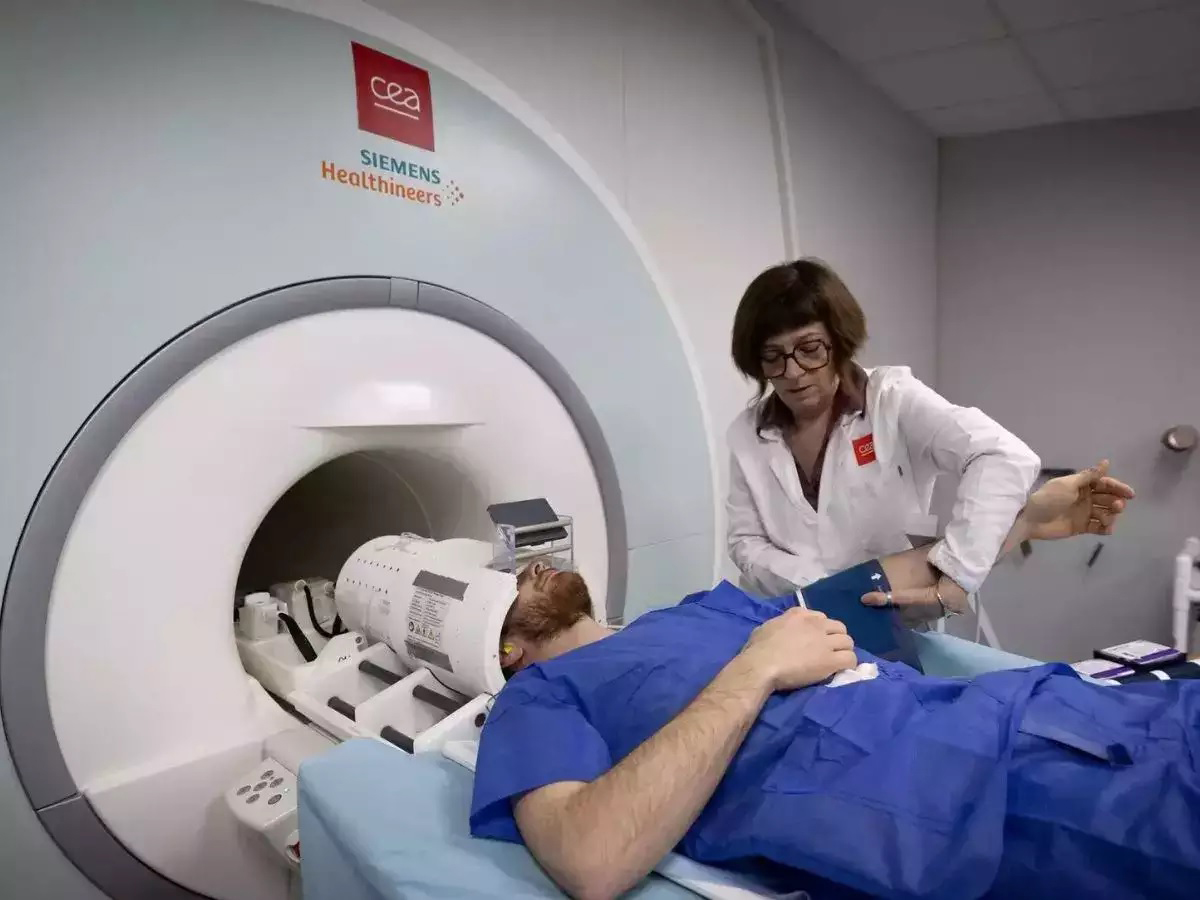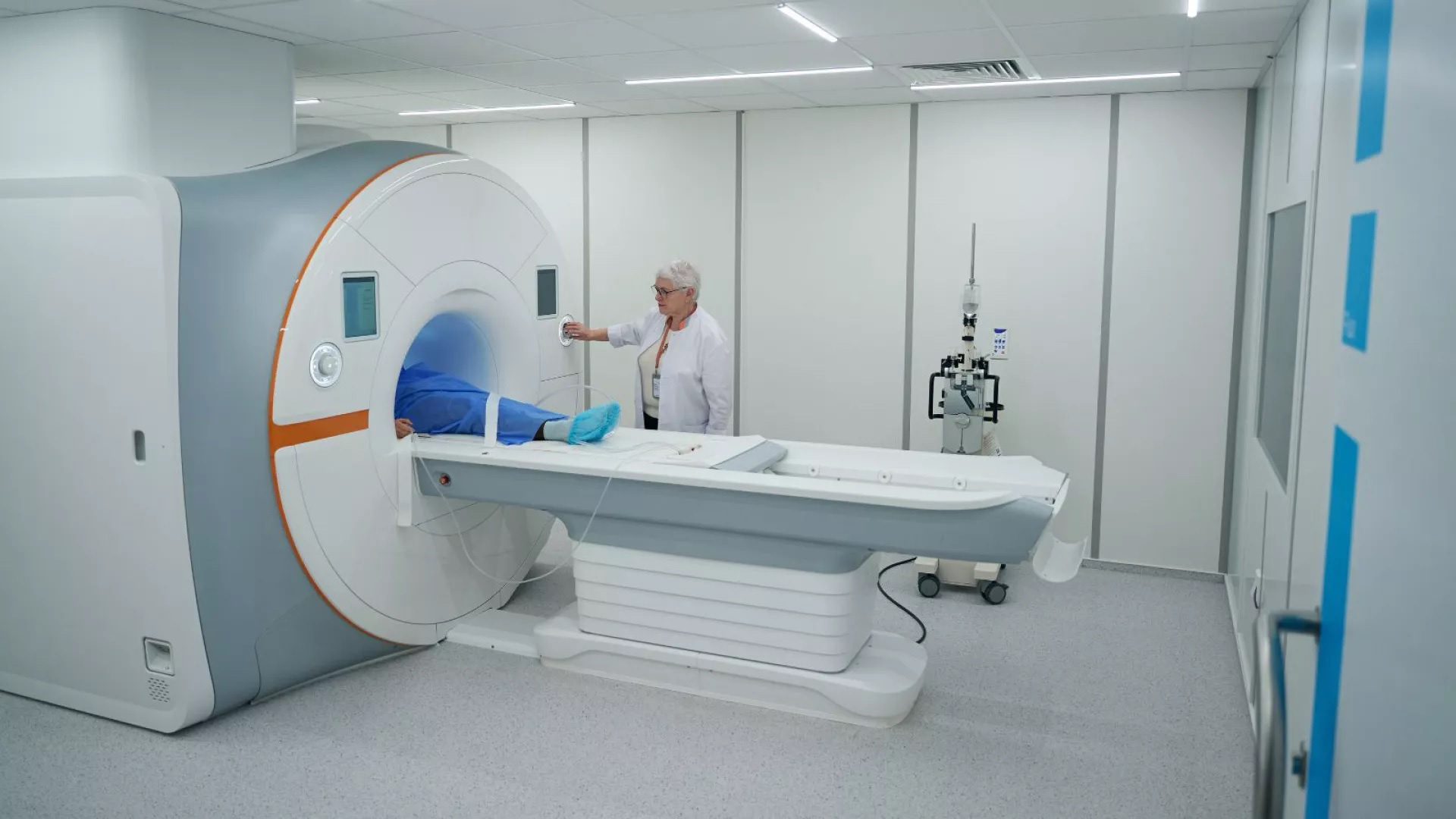The CEA is revealing a series of in vivo human brain images acquired with the Iseult MRI machine and its unmatched 11.7 teslas magnetic field strength. This success is the fruit of more than 20 years of R&D as part of the Iseult project, with one pillar goal being to design and build the world’s most powerful MRI machine. Its ambition is to study healthy and diseased human brains with an unprecedented resolution, allowing us to discover new details relating to the brain’s anatomy, connections, and activity.

Just about four minutes. That’s all it took to acquire some of the most remarkable anatomical images of the brain from participants in the first study involving the Iseult MRI machine. The scanner, which uses magnetic resonance imaging technology, has a magnetic field intensity of 11.7 teslas, making it the most powerful in the world. The images have an impressive resolution for such a short acquisition time – 0.2 mm in-plane resolution and 1 mm slice thickness, which represents a volume equivalent to a few thousand neurons. For comparison, the same image quality would require hours with MRI scanners currently available in hospitals (1.5 or 3 teslas). This is not realistic in practice as patients would not be comfortable and any movement would “blur” the image.

Achieving such detailed resolutions will allow us to obtain previously unattainable information about brain mechanisms, understand how our brain encodes our mental representations and find out what neuronal signatures are associated with the state of consciousness.
Understanding Alzheimer’s, Parkinson’s, psychiatric disorders
The level of detail achieved with the Iseult MRI machine will have an impact on medical research. Firstly, the ultra-detailed anatomical information will support diagnostic and health care for neurodegenerative diseases such as Alzheimer’s and Parkinson’s.
Secondly, the Iseult MRI machine will facilitate the detection of some chemical species with weak signals that are hard to capture at lower magnetic fields, such as:
lithium, a drug used to treat bipolar disorders; we will be able to precisely assess its distribution in the brain and better understand its efficacy;
molecules actively involved in brain metabolism, such as glucose and glutamate; such information will directly contribute to the characterisation of many brain diseases (gliomas, neurodegeneration, etc.)

Key Figures
- 11,7 teslas (T) magnetic field strength (vs 1.5 and 3 T for conventional MRI machines in hospitals)
- 132 tons, 5 m long and 5 m wide
- 182 km of superconducting wires
- 1 500 amperes running through the coil
- -271.35 °C: the temperature at which the magnet is cooled by using 7 500 litres of liquid helium 90 cm of central opening

With the Iseult project, a whole new world is opening up before our eyes, and we are excited to explore it. We still need several years of research to develop and improve our acquisition methods and ensure that the data has the highest quality possible. Our goal is to investigate neurodegenerative diseases by 2026-2030, as well as other diseases that fall more under psychiatry, such as schizophrenia and bipolar disorders. Cognitive sciences will also be of key importance in our research!”, Nicolas Boulant, the Head of the Iseult project and Director of Research at the CEA

